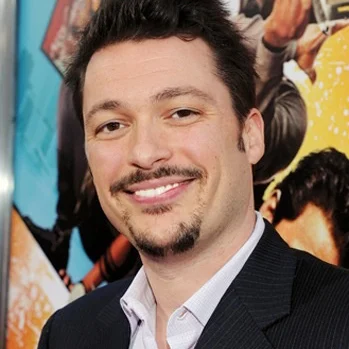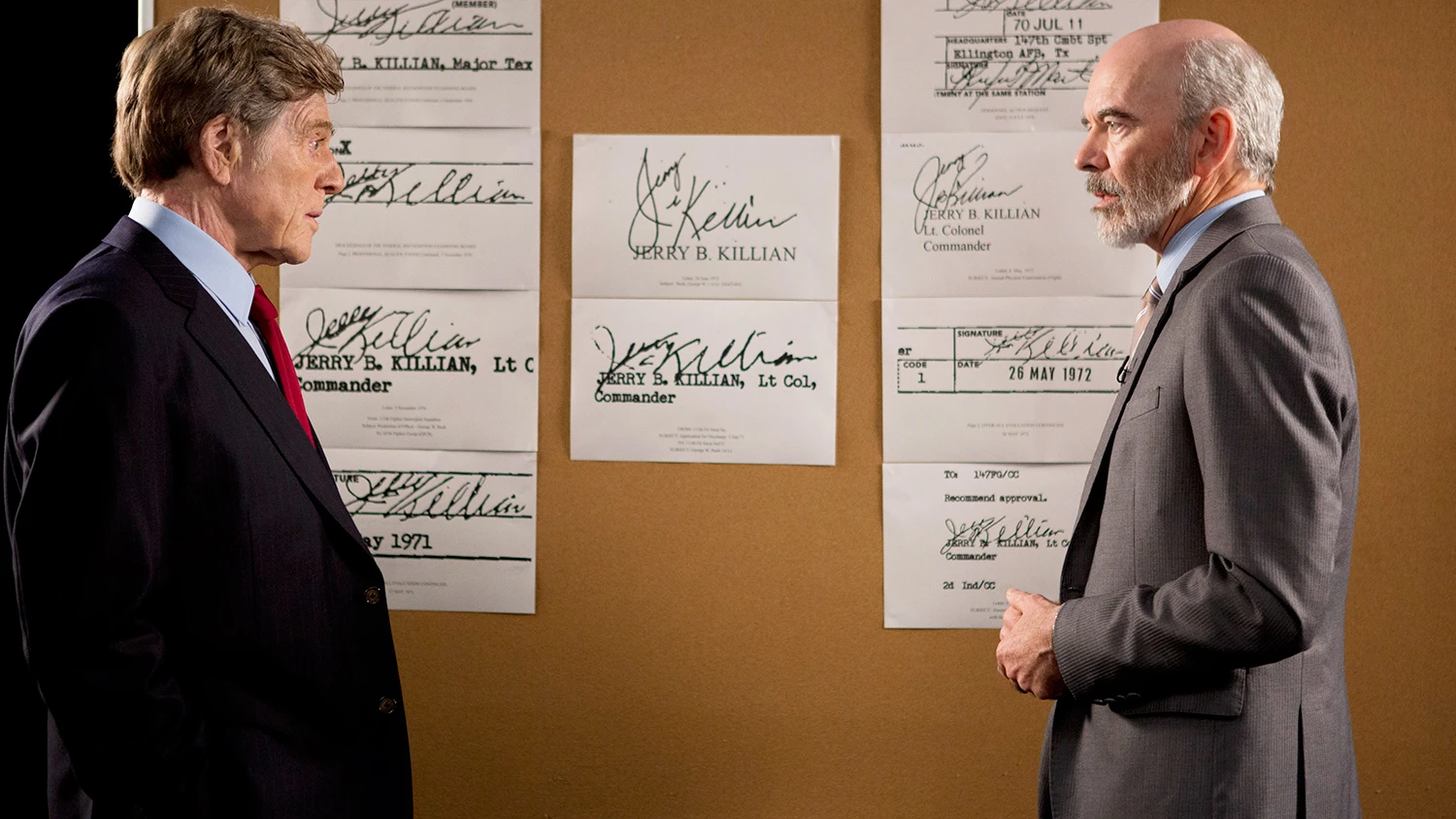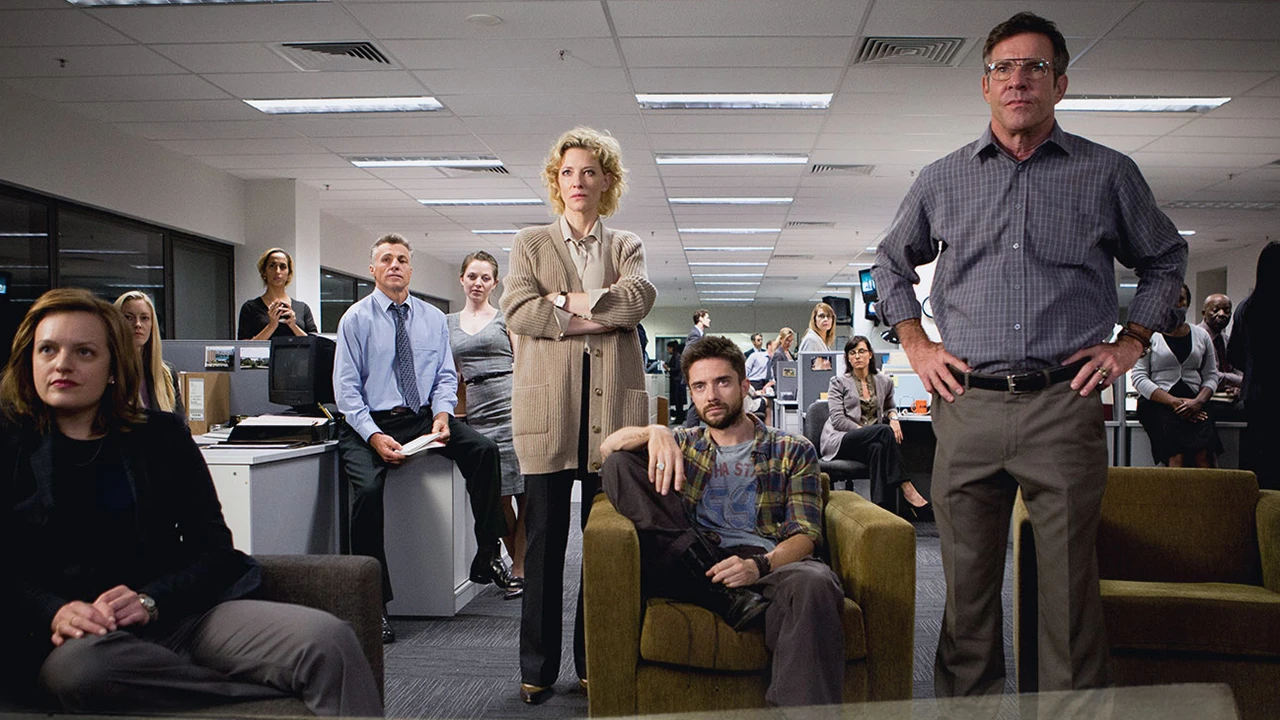60 Minutes producer Mary Mapes’s reversal of fortune happened with stunning speed. Her 2004 expose of the Abu Ghraib prison scandal earned the Peabody Award for outstanding investigative journalism, but a few months later, CBS News fired Mapes and forced Dan Rather to apologize on air after their telecast questioning George Bush’s military service got attacked for relying on allegedly forged documents.

Amazing Spider-Man writer James Vanderbilt chronicles Mapes’s fall from grace in his directorial debut Truth. Opening October 16 in limited release, the film stars Cate Blanchett as the hard-driving Mapes with Robert Redford taking on the role of broadcasting icon Rather. Elizabeth Moss, Dennis Quaid and Topher Grace round out the team of investigative reporters who rush to meet a fast-approaching air date before their rivals get a chance to break the story.
Vanderbilt envisioned Mapes as feature film material the minute he read her account of the scandal in Vanity Fair magazine. “I was really interested in the rise and fall aspect of the story,” he says. “It was fascinating to see that Mary and everybody at CBS were taken by surprise at the speed of the [bloggers] response. I grew up in an era when network news anchors were seen as the voice of God, so when you look at the history of journalism, this ‘Bush Guard’ incident represents a real fulcrum point.”
Fighting Back From Abuse
Vanderbilt secured Mapes’s okay to make a movie about the darkest chapter of her professional life after he and his wife flew to her Texas home for a getting-to-know-you weekend.
Out of those talks and later conversations, Vanderbilt discovered that Mapes’s father routinely beat her. “I had a moment with Mary–I gave this line to Elizabeth Moss in the film–where I said ‘So, you used to get hit for asking questions, and you grew up to be a reporter?’ Once I learned that, I went ‘Oh, that’s what’s this movie is about.’ We meet somebody who’s at the top of her game, great job, great husband, great kid, working with Dan Rather–Mary Mapes has got it made. But as the story progresses, we peel the onion and find out who this person is inside and what she’s hiding. I feel like we all have this scared kid inside of us that we try to put these layers on to protect, so the idea of watching an actor–and thankfully that actor is Cate Blanchet–take the audience on this journey became really exciting to me.”
For Vanderbilt, Truth marks a departure from his action-driven scripts for Amazing Spider-Man and White House Down. It also lacks the serial killer hook at the heart of his David Fincher-directed Zodiac thriller. But while index cards, emails, and phone calls may generate most of the suspense in the explosion-free Truth, Vanderbilt applied the same skill set he uses to craft a car chase sequence. “The tools may differ from one genre to the next, but for me It’s always about how to make an audience feel something,” he says. In Truth, there’s this sequence at the end where Cate has to answer questions from this board of enquiry. That’s our version of a gun fight. You don’t have to threaten to blow up the east coast in order to make an audience tense.”

Font as Villain
Mapes’s reputation comes under attack In Truth because of an unusually esoteric villain: Times New Roman type font. Conservative bloggers tore into documents presented as evidence in Rather’s Sept. 8, 2004 telecast by claiming that the font would have been unavailable on typewriters in 1972, when Bush’s commanding officer supposedly wrote letters stating that George Bush skipped out on National Guard duty. “Some people who’ve seen the movie tell me that the font sequence was really suspenseful,” Vanderbilt says. “The challenge was to figure out how to make fonts compelling. I loved being able to take deep dives into what everybody had to deal with during the fallout from the report.”

No Time to Get Nervous
Set in New York and Texas but filmed in Australia to accommodate Blanchett, Truth gives the Blue Jasmine Oscar-winning actress a chance to channel Mary Mapes to such unnerving effect that Dan Rather himself came away from the set stunned by the similarity between actress and producer. “I was floored by how closely Cate resembled Mary,” he said in a statement. “Not just her hair and clothes, but her mannerisms, her walk, her vocal delivery.”
Did Vanderbilt get nervous about steering Blanchett through her performance? “I didn’t have time to be scared,” he says. “The last thing I’d directed had been a Super 8 short I made in college, so it was a bit of a jump, but you don’t hire someone like Cate Blanchet to do a movie so you can tell her how to say stuff. You hire Cate for her instincts and her great brain for how she’s going to attack the character.”
Asking Questions, Not Answering Them
Besides its behind-the-scenes look at a species of broadcast investigative journalism that today borders on extinction, Truth draws much of its emotional power from the father/daughter-like bond between Rather and Mapes. As blowback to the report builds, the reporters’ intensity finds expression in their shared shorthand “FEA”–short for “Fuck ‘Em All.”
Should Rather have pressed Mapes more urgently before broadcast about the sourcing of their report? Did Mapes get it right about Bush, even if the documents were wrongly fabricated? Vanderbilt says, “The movies I love are the ones that ask questions, not the ones that answer them,” Vanderbilt says. “Dan Rather does not need James Vanderbilt to help with his legacy. We didn’t go into this movie to right wrongs or anything like that. And it’s not about Bush any more than All The President’s Men was about Nixon. My goal first and foremost was to tell this story so people can form their own opinions and make their own judgments.”
Recognize your brand’s excellence by applying to this year’s Brands That Matter Awards before the early-rate deadline, May 3.
